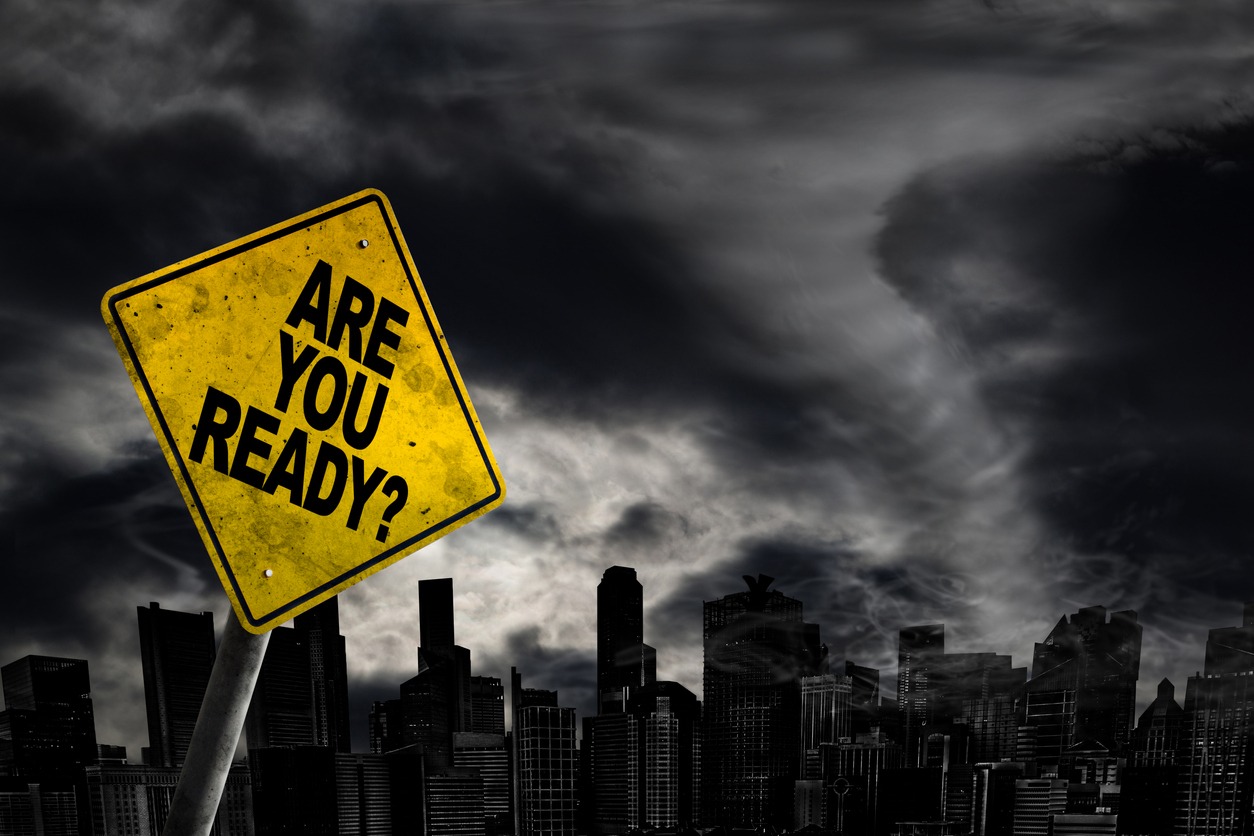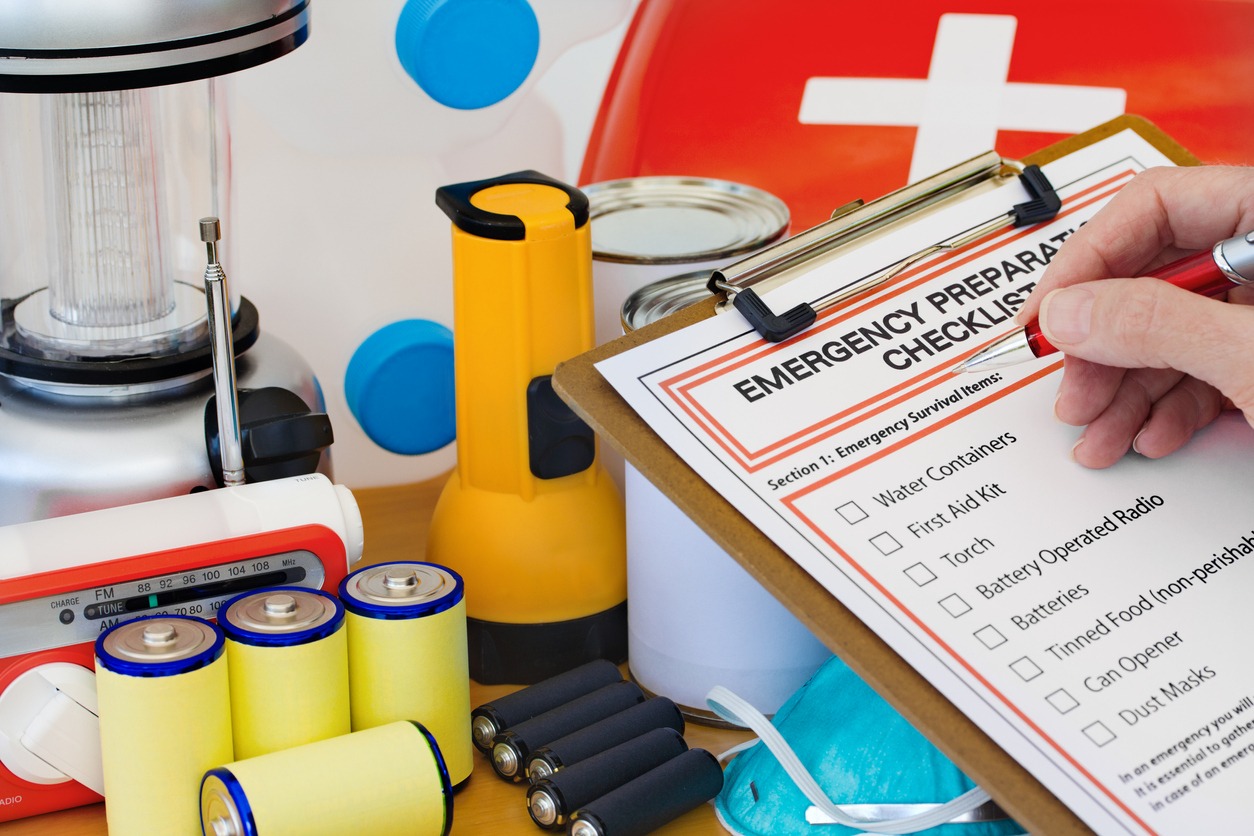If you live in a city, the likelihood is that the space you have available to store all of your belongings is adequate, or it may even be smaller. You may believe that you do not have enough space to prepare for an emergency, but the reality is that you do not require a large amount of space to become a prepper.
It would be wonderful to live in a house with several rooms, a garden, a full-size garage, and a basement; however, not everyone has the luxury of the necessary space and the necessary funds. However, even if you live in an apartment in the middle of a bustling city, you can still stock up on survival supplies and get ready for any kind of emergency. A modest amount of ingenuity and strategizing is all that is required. Here are some helpful tips to make the most of the space available for urban prepping.
1. List All the Things You Require
Get a notebook and a pen and make a list of all your supplies before beginning the process of storing and organizing them. In the event of an emergency, you may forget where everything is located; however, you cannot afford to forget where the most important items are kept. Do not save it on the computer or the laptop because both devices require electricity or a battery to function. Put that notebook away in a secure location. To keep your list organized, you should break up your notebook into sessions, with each session standing in a different room and containing a list of the supplies that are kept there. Make columns for the type of supply, the room it was hidden in, and the precise location of the hiding spot.
2. Food Preparation and Storage
It is likely that, in the event of an emergency, you will be able to prepare and consume food in a manner that is comparable to how you would normally do so. If supplies to grocery stores are disrupted, you will have no choice but to rely on the food storage you have in your home if you plan to remain there for the duration of the emergency.
When you are stocking up, you should always be thinking of ways to save space because there is a limited amount of it. Consider storing foods that have been dehydrated as an alternative to canning and boxing an excessive amount of food, which takes up a lot of space.
You can either purchase food buckets that contain multiple packets of dehydrated meals or you can dehydrate your food, place it in plastic bags, and then make your food buckets. Food buckets are available. You could also use the bags to store your dried goods in them. A box of pancake mix takes up more space than a bag of pancake mix that has been sealed, but the bag helps the product stay fresh for a longer period.
You can get food-grade buckets of a 5-gallon capacity from local restaurants or you can purchase them online. Be sure to take note of the dates, as even the food that has been dehydrated and sealed properly can become stale over time.
Also, rather than stockpiling hundreds of gallons of water, keep only the amount necessary to last a few days’ worth of consumption. Take some purification tablets as a supplement. It has the potential to provide you with an additional gallon or two of water per bag, which you can fill up before SHTF.
3. Water Storage
When preparing for an emergency, water is the single most important thing you can store. It is possible to survive for a much longer period without food than without water; death can occur after only a few days without water. At a rate of one gallon per person per day, the Federal Emergency Management Agency (FEMA) advises keeping a water supply at home sufficient for each individual for a period of two weeks. If you live by yourself, everything is simple. Buy a 15-gallon barrel, and you’re good to go. You could also store in the closet either three water containers of 5 gallons each or two water containers of 7 gallons each.
It might be challenging to find the space to put all of that water if you have a family or if you share living quarters with other people. However, as we discussed earlier, with a little bit of ingenuity and resourcefulness, you can use the smaller nooks and crannies in your home to store small-capacity containers; if necessary, you can even store them one liter at a time.
Make sure that the water you have stored is kept in a location that is as cool and dark as possible. Because milk jugs are made of biodegradable material, you should not use them to store your water supply because they will eventually become damaged and leak. Water storage is supposed to put your mind at ease, not make you want to pull your hair out, and that is not the kind of mess you want to deal with.
4. Use All Available Space
You might think that your apartment is on the small side, but you should make sure that you are maximizing every available space. You have the option of putting in tall shelving for a few boxes or using stackable plastic bins to make the most of the space that you have available. Use opaque storage bins on an open shelf if you don’t want other people to see what you’re storing because you don’t want them to know what it is. The following is a list of the storage areas in your house that you should make the most of:
Under Your Bed
In this space, you can keep plastic bins to store things like blankets, winter supplies, and other items.
Medicine Cabinets
If you know how to arrange its interior space effectively, this little cabinet can hold a lot of things. It might come as a surprise to you just how many tubes of toothpaste, ointments, and medications you can store in here all at once.
The Back of Closet Doors
At the back of the doors of the closet, attach hooks or shoe bags, and then stuff the pockets with various types of food and snacks. Make sure that the things you put in the pockets are not too heavy because this could cause the pockets to tear.
Backpacks and Cases
Pack your bags with clothing, toiletries, medical supplies, blankets, food, and water, and put everything in your suitcases and backpacks. Using this method, you can easily leave with everything you require by simply picking up your suitcase or backpack and going.
Car Space
Examine the contents of the trunk of your car. You can keep additional articles of clothing and non-perishable items in there so that in the event of an emergency, you can quickly get into your vehicle and flee the area.
5. Maximize the Use of Organizers and Containers
Plastic bottles, lunch boxes, shoe boxes, organizers, and containers are some of the things that some people throw away, which is a waste because these things can still be useful. To further reduce waste, recycling and reusing these items will be of great assistance. There are a great number of things that can be stored in them if they are organized properly. The following are some pointers to consider when recycling old containers:
- Do not simply dispose of bottles made of durable plastic. It should then be sanitized and filled with potable water.
- You can organize your pantry with the help of some old boxes. In addition, while you are organizing, you will have the opportunity to remove any stale items that you may be stockpiling and make space for newer, more up-to-date supplies.
- Shoe boxes can be used to house emergency kits, and you should make sure to have at least one of these in each room.
- It’s a common misconception that lunch boxes are only useful for storing food. In particular, if you have an older lunch box, you can use them to store things like first aid supplies and toiletries. If you have children living with you, you should get one ready for each of them and then remind them to keep it within reach at all times.
Not all survivalists have enormous pantries stocked to the brim with supplies in case of an emergency. The majority of people live in cramped apartments in the middle of the city, leaving little room for them to store any kind of emergency supplies. The good news is that there are effective ways to make do with the limited resources you possess.

